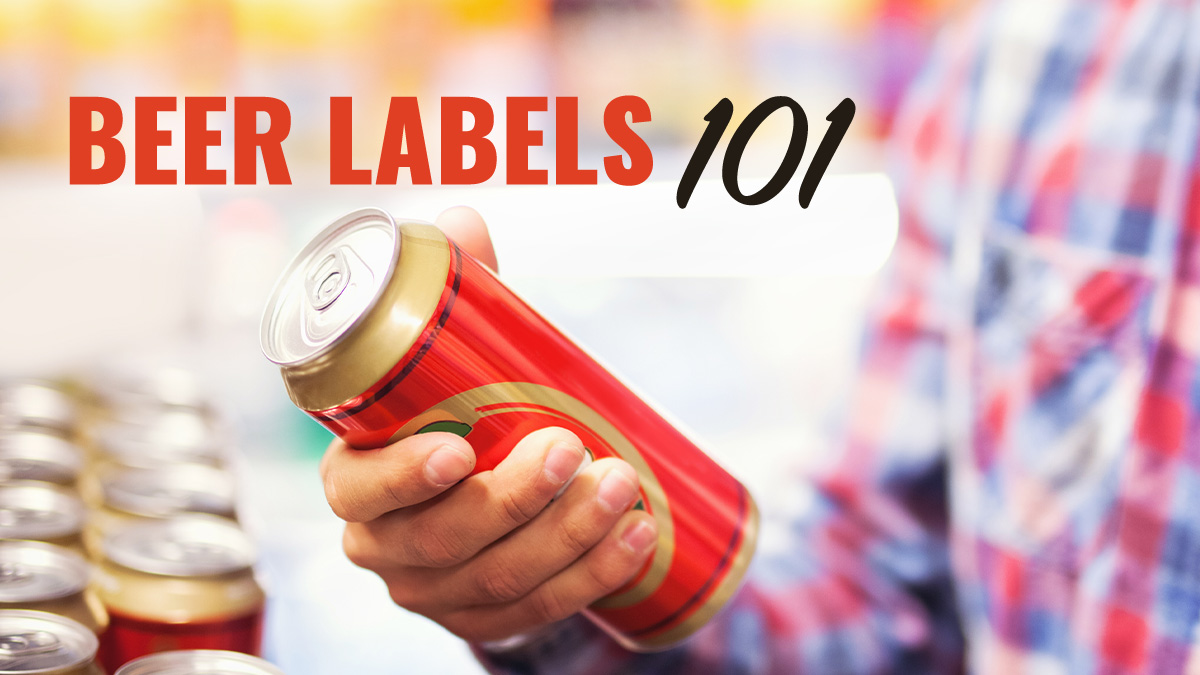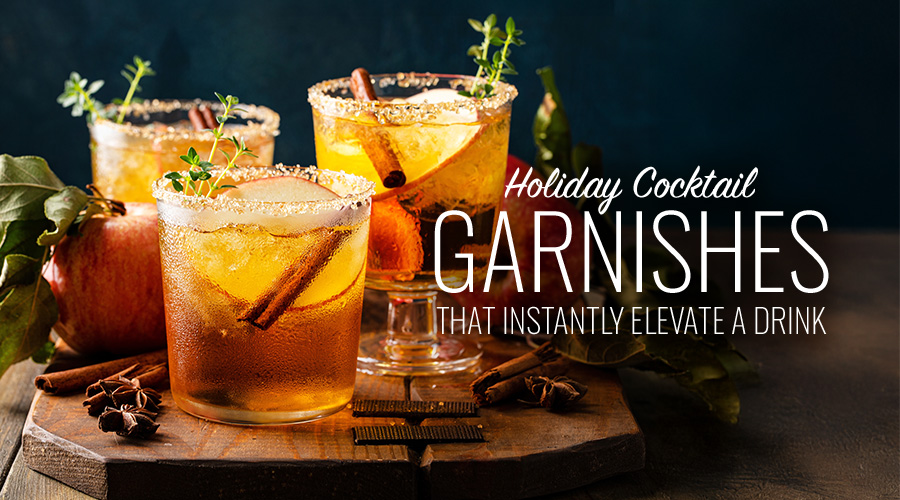
Estimated Reading Time: 6 Minutes
How Does One Read A Beer Label?
So you’re interested in Meadophily or the study of beer bottle labels. Now sure, we could spend the whole blog talking about beer label design and with there being over 8,000 breweries in the United States alone, it’s more crucial than ever for a beer to have a cool looking label so it can stand out in the crowd. But we’re not. Instead, we are interested in what they say and the meaning of them. So join us in a little Meadophily 101 and learn how to read beer labels. And while this may seem like an overwhelming task at first, once you’ve read this article and understand the basics you’re in for a treat.

What Should I Look For While Reading Beer Labels?
That’s a good question. When you first pick up a bottle or can of beer (or a keg if you’re really really strong), you’ll notice a lot of acronyms and some unfamiliar words on the label. Things like IBU, Plato, and other terminology that may be rather confusing at first glance. But don’t worry, this handy little list will help you understand them so you can enjoy your beer with peace of mind.
ABV – Also known by its full name, Alcohol By Volume. This shows the alcohol content in the bottle. Ethanol is the primary type found in fermented beverages, although other types can also be present in small amounts in beer. Generally, higher alcohol content results in a richer and more complex flavor profile. Additionally, high-alcohol beers often have a thicker, smoother mouthfeel.
IBU – International Bittering Units. This is the standard way to measure hop bitterness in beer. It refers to the concentration of dissolved iso-alpha acids (the bitter components of hops) in parts per million (ppm). In simple terms, a higher number indicates a hoppier beer.
FG – FG is short for Final Gravity. This measures the beer’s density at the time of bottling and is used to determine its alcohol content. You might also come across the term Apparent Attenuation (AA), which indicates the difference between the original and final gravity. Attenuation reflects how much of the residual sugar has been fermented out in the finished beer.
Plato – This is a scale used to measure the specific gravity of a beer’s wort (unfermented beer), indicating its sugar content. The Plato scale helps brewers determine the potential alcohol content and the body of the finished beer. Higher Plato values typically indicate a richer, fuller-bodied beer.
Imported Beer – You may already know this but just as a quick refresher, this indicates the beer’s country of origin. Imported beers can come from various countries and include a wide range of styles and flavors. The distinction is often made to highlight the beer’s origin, which can affect its taste and brewing methods.
Brewer’s Notes – This might be the most fun part of a beer label. While they don’t appear on every beer label as they’re more prevalent in limited releases, Brewer’s Notes talk about the style of beer, brewing, and its aging process.
Lovibond, SRM, or EBC – These terms describe the color of beer. Lovibond is a system that measures beer and grain color by comparing samples to vials of colored liquids. SRM (Standard Reference Method) is calculated as ten times the optical density of beer measured at 430 nm using a spectrophotometer. EBC (European Brewers Convention) is a standard-setting organization for brewing, commonly used to describe malt color. In all these scales, a higher number indicates a darker beer.

So What’s The Deal With The Random Numbers I See On Beer Bottles And Cans?
When reading a beer label, you’ll find a seemingly random series of numbers and letters around the neck of the bottle or at the bottom of the can. Those are the beer codes and beer dates. While we totally get not wanting to think about numbers, math and the like, these two are very important for enjoying your beer.
First up, beer codes. Also known as batch codes, this is a distinctive, 14-character code that identifies a beer product. You can find beer codes on the neck of a bottle, the bottom of a can, or on the case. They can be tricky to read due to smudging, faint printing, or being located only on the case. Usually beers codes follow a format similar to this:
L – Lot
7 – Year
016 – Julian Date
484 – Mexico Code
C – Brewery
A – Product Line
22 – Hour (Military Time)
00 – Minute
Then there’s beer dates. These dates indicate when a beer was brewed or packaged. Often referred to as shelf-life dates, they can be identified by phrases like “best before,” “enjoy by,” or “consume by.” These dates suggest when the beer is best to drink, and many breweries ask retailers to remove beers from shelves once the date has passed. You can find these on the neck, shoulder, and back label of a beer bottle, on the bottle of a beer can, the sides of cartons, and the top and side wall of beer kegs.Usually beers dates follow a format similar to this:
BBD – Best Before Date
AUG – Month (Pull Date = AUG 31 or Last Day of the Month)
2018 – Year
If you have some beer at home, we recommend checking this date. We don’t want you drinking potentially bad beer.
Now What?
Cheers! You made it through your crash course on how to read beer labels. Now, you can take your knowledge out into the real world. We highly recommend the first place you do so is your neighborhood Spec’s where we have the largest selection of beers in the state. Domestic. Imported. Craft. They’re all right here. Who knows, you may even pick up Labeorphily. That’s the collecting of beer bottle labels. It’s a really fun hobby, you should try it sometime. There’s also Tegestology, or the collecting of beer mats and cardboard beer coasters. But that’s a different blog for a different day.
Happy drinking, everyone!
Beer Label FAQ
The numbers often refer to metrics like ABV (Alcohol By Volume) and IBU (International Bitterness Units), which provide insight into the beer’s strength and bitterness. They can help consumers choose a beer that matches their preferences.
ABV (Alcohol By Volume) indicates the alcohol content of a beer. Higher ABV beers tend to have stronger, bolder flavors, while lower ABV beers are often lighter and more sessionable.
IBU (International Bitterness Units) measures a beer’s bitterness level, derived from hops. A higher IBU indicates a more bitter taste, while a lower IBU suggests a sweeter, malt-forward profile.
Beer styles (e.g., IPA, Stout, Pilsner) describe the brewing method, ingredients, and flavor profile. They help consumers understand what to expect in terms of taste, aroma, and body.
These terms usually indicate that the beer is produced by a smaller, independent brewery focusing on quality, creativity, and traditional brewing methods, often in limited quantities.
Key details include the beer style, ABV, IBU, brewery name, and any special designations like seasonal, barrel-aged, or unfiltered. These elements help guide your choice.
The brewery name can provide insights into the beer’s origin, reputation, and style. Some breweries are known for specific types of beer or innovative brewing techniques.
Limited Release or Seasonal beers are produced in small quantities or for a specific time of year. They often feature unique ingredients or styles tailored to the season.
The date can indicate when the beer was bottled or its best-by date. Freshness is especially important for certain styles like IPAs, which are best consumed soon after production.
Label designs often reflect the brewery’s branding, the beer’s theme, or its flavor profile. While mostly aesthetic, they can hint at the beer’s personality or uniqueness.
A Hop Profile or Hop Bill refers to the specific hops used in the beer and their contribution to its flavor and aroma, such as citrusy, piney, or floral notes.
Dry-hopping involves adding hops during fermentation to enhance aroma without increasing bitterness. Double-hopped beers use an extra dose of hops for intensified flavor and aroma.
- Unfiltered: The beer is not filtered, retaining more of its natural flavor and texture.
- Bottle-Conditioned: The beer undergoes a secondary fermentation in the bottle for added carbonation and complexity.
- Barrel-Aged: The beer is aged in barrels, often imparting flavors like oak, bourbon, or vanilla.
These beers are fermented using wild yeast strains or bacteria, resulting in tart, funky, or complex flavors. Brett beers specifically use Brettanomyces yeast for unique earthy or fruity notes.
Calorie information indicates the beer’s caloric content, which can vary based on alcohol, residual sugars, and malt content. Light beers tend to have fewer calories.
Look for certifications or labels specifying gluten-free, vegan, or allergen-friendly. These beers are often crafted with alternative ingredients to meet dietary needs.
The origin indicates where the beer was brewed. Certain regions, like Belgium or Bavaria, are renowned for specific beer styles, which may influence your choice.
- Session: A lighter beer with lower ABV, designed for extended drinking sessions.
- Imperial: A stronger, bolder version of a beer style, often with higher ABV and more intense flavors.
- Double: Similar to Imperial, indicating a higher concentration of hops, malt, or alcohol for a richer taste.




